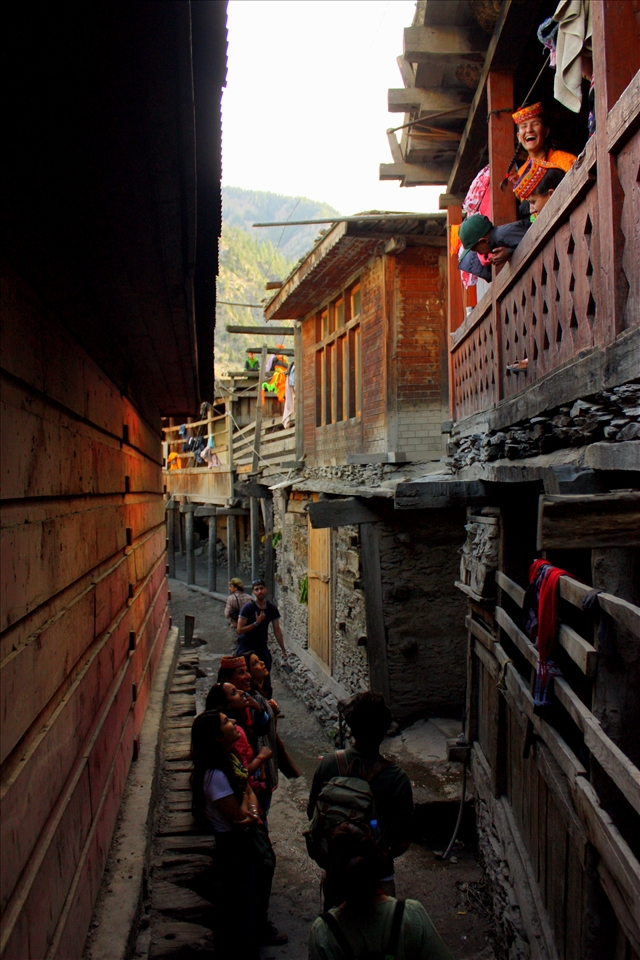
PAKISTAN | Monday, 24 November 2014 | Views [1104] | View Smaller Image
Kalash children on the balcony of their home in Bumburait Valley share a laugh with Pakistani tourists below.
Today, tourism forms one of the mainstays of Kalash economy, along with the traditional occupations of goat-herding and farming. Every year during the three festival seasons – spring, autumn and winter – tourists from the Pakistani lowlands, as well as a steady number of brave foreigners, throng to the Kalash Valleys to witness the rituals and way of life of these people, the last truly indigenous people of Pakistan. While the Kalash are generally very friendly and hospitable, not everybody is happy about the seasonal invasions of their privacy.